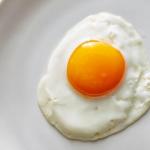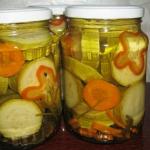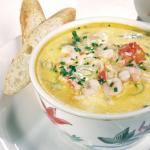Italian Easter Panettone: Easter recipe with photos for cooking at home. Italian Easter Panettone: Easter recipe with photos for cooking at home Christmas Panettone cake
Panettone is an Italian Christmas cake in the shape of a dome, rich, fluffy and very fragrant. According to tradition, it is baked a few days before Christmas, and the more spices, dried fruits and candied fruits are added to the dough, the more successful the coming year will be.
Of course, you can cook it not only on one wonderful holiday of the year. Panettone can be prepared not only for Christmas, but also for Easter. In shape and recipe, this pie is similar to our Easter cake.
Here is an easy and quick light panettone recipe. We invite connoisseurs of complex culinary experiments to follow the link and try to prepare Panettone according to a traditional Italian sourdough recipe:
Ingredients
- flour – 800-850 g
- milk – 1 glass (250 ml)
- sugar – 1.5 cups
- fresh yeast – 40 g
- butter – 150 g
- eggs – 3 pcs.
- egg yolks – 2 pcs.
- candied fruits - 2/3 cup
- raisins – 150 g
- dried apricots – 150 g
- ground nutmeg – 1 tsp.
- cardamom – 0.5 tsp.
- lemon or orange zest - 1 tbsp. l.
- vanilla sugar – 2 sachets
Cooking time: 3 hours / Yield: 14 servings
Preparation
Big photos Small photos
Yeast along with 2 tbsp. l. Place sugar in a small bowl. Grind into a paste and pour in 3-4 tbsp. l. warm milk.

Add 2 tbsp. l. flour, stir. Leave for 10-15 minutes until bubbles appear on the surface. This preparation will help activate the yeast faster, and it will work better in the dough.

Sift 2 cups flour into a large bowl.

Pour in warm milk, stir with flour.

Pour the yeast dissolved in milk into a thick, viscous mass.

Stir the dough with a spoon until it becomes almost homogeneous and viscous.

Cover it with a lid and put it in a warm place without drafts. The dough should stand in a warm place for at least an hour. During this time, it will rise 3-4 times, soften, and become loose.
A sign of a well-suited dough is numerous holes. When the dough begins to settle slightly, it’s time to knead the dough.

Beat the eggs, add the yolks and pour everything into the dough.

Cut the soft butter into pieces, pour sugar into the dough. Stir everything until completely combined with the dough.

Add 3 more cups of sifted flour, all the spices and herbs.

The panettone dough needs to be kneaded very well. At the beginning of kneading it will be sticky, but don’t add a lot of flour, add it literally a spoonful at a time. You need to knead it like any dough - with the bottom of your palm, rotating the lump of dough around its axis. The result should be a soft, plastic dough, homogeneous and buttery. Place it in a spacious bowl and cover. Place in a warm place to proof for about 1.5 hours.

Cut candied fruits and dried apricots into small pieces.

A well-kneaded dough will rise well and increase in volume several times.

Knead the risen dough, add the zest, steamed raisins, dried apricots and candied fruits.

Knead the dough again and let it rise again.

It should fit in the form in which the panettone will be baked. Be sure to grease the pan with oil and line the bottom and sides with oiled parchment. After an hour, the dough will increase 3-4 times - now you can grease it with yolk and put it in a preheated oven. Maintain the temperature within 180-190 degrees, bake the pie for 45-50 minutes. Very carefully remove the finished baked goods from the pan and cool on a wire rack.

Panettone is not usually sprinkled with powdered sugar or decorated with glaze. The cake is wrapped in beautiful paper and tied with a bright ribbon. Traditionally, panettone is served with sweet red wine or a cup of aromatic coffee.
ON A NOTE. Like any rich pastry, the pie must sit, gain flavor, and be saturated with aromas, so cut it no earlier than a day or two after cooking.
There are a great many recipes for this festive Easter baking, and each nation adds its own national flavor to the Easter cake. On the Apennine Peninsula, Italian Easter “Colombo” in the shape of a dove and Easter cake “Panettone” are traditionally baked for Easter. We will tell you about the secrets of preparing the latter.
In the Apennines, this yeast dessert, according to custom, is baked for the Christmas holidays. In the homeland of this cupcake, they put a large amount of raisins, candied fruits, nuts, candied fruits, honey, spices and marzipan into it. Before serving, it is traditionally decorated with powdered sugar, icing, fruits and nuts.
The history of the recipe for this cupcake is entangled with beautiful stories. According to one version, its name is translated from Italian as “bread of luxury.” It is known for sure that this now famous delicacy was first prepared in the 15th century in Milan, at the court of Duke Louis Moreau.
However, the origin of this pastry dates back to the time of the Roman Empire. According to one legend, even the ancient Romans flavored ordinary yeast bread with honey, candied fruits and dried fruits. The first record of this yeast dessert is found in the writings of the 18th century Italian philosopher Pietro Verri, who called it “Pane di Tono”, which translates as “luxury cake”.
Interestingly, over the centuries this fruitcake has appeared sporadically in the works of celebrities. For example, on the canvases of the great master of painting of the 16th century, Pieter Bruegel the Elder, in the works of the famous Italian Renaissance cook Bartolomeo Scappi (personal cook of the popes and emperors during the reign of Charles V). However, the Italian Easter “Panettone” gained worldwide fame only in the 19th century thanks to two Italian confectioners - Gioachino Aleman and Angelo Motta.
And today, this fragrant, unsurpassed masterpiece of Italian bakers is served at Christmas not only in Italy. It decorates the table on holidays for Uruguayans, Bolivians, Argentines, Chileans, Peruvians and residents of a number of other countries.
Baking secrets
We will present a recipe from the famous pastry chef Valeriu Petcu, whose airy, aromatic pastries are loved by Placido Domingo, Shakira and Madonna. The pastry chef himself notes that the difference between Orthodox Easter cake and what is baked in the Apennines is the presence of alcohol in the recipe. Italian housewives always add a little rum to the dough, which allows the baked goods to remain soft and fluffy longer.
Petka also draws attention to the fact that the dough differs in consistency. Milanese cake is very light and porous, while Slavic cake is denser and somewhat similar to bread. According to the pastry chef, to get a classic Milanese cake, you first need to mix all the dry ingredients, and then beat the liquid ones with a mixer. Only when the mass has become completely homogeneous should you gradually, one spoon at a time, add soft butter. In this case, it is very important to mix slowly, in small portions, until it is completely dispersed throughout the entire mass.
Meanwhile, the pastry chef notes that Italians also have a tradition of serving this cupcake to the table for Easter. Having previously cut the pie into cubes, housewives in the Apennines fry them in oil until they turn brown, then add grappa (an alcoholic drink made from grapes) and set it on fire.
The delicacy is served at the festive table, according to custom, in a bowl. Place a scoop of vanilla ice cream on top.
Step-by-step cooking recipe
Making an Italian tall pie doesn't require much effort. But, according to Valeriu Petcu, the Panettone cake recipe has some tricks.
But if prepared correctly, with all the secrets observed, it will not go stale for more than two weeks. To prepare this cake you will need:
- raisins - 170 g;
- light rum - 20 g;
- hot water - 20 g;
- premium flour - 540 g;
- sugar - 150 g;
- dry yeast - 5 g;
- salt - 2g;
- lemon zest - 6 g;
- half a vanilla pod;
- eggs at room temperature - 3 pcs.;
- warm water - 170 g;
- honey - 40 g;
- softened butter - 250 g;
- melted butter - 1 tbsp. l.;
- chilled butter - 1 tbsp. l.;
- candied fruits - 130 g.
In a bowl you need to mix raisins, rum and hot water. Stir occasionally. Wait until the raisins absorb moisture and become round. In a food processor with the kneading attachment, mix all the dry ingredients (flour, yeast, sugar, salt, vanilla bean, lemon zest) at low speed. In a small container, beat eggs with warm water and honey.
Next, pour the beaten egg mixture into the bowl of the food processor, switch the speed to medium and mix until the dough is completely elastic and homogeneous. Then start adding softened butter in small portions. When the entire portion indicated in the recipe has been added, increase the speed further and knead the dough for about 8 minutes until it becomes elastic.
Strain the raisins. Mix it with candied fruits and 1 spoon of melted butter. Using a wooden spoon, carefully add this mixture to the finished dough. Then place it in a bowl (choose the size with the expectation that the dough will triple in size), wrap it in film and leave to rest for 12–15 hours in a warm place.
When the dough has risen, remove the vanilla bean, sprinkle with flour and form into a ball. Place the ball in a baking dish. Cover with a damp cotton towel and leave in a warm room to rise. At the same time, it is important that where the baking is suitable, there are no drafts, due to which it can settle. The mass will rise above the sides of the mold, which can take from three to five hours.
Before placing in the oven, carefully make a cross-shaped cut on the top of the cake with a sharp knife and place a tablespoon there. a spoonful of butter, always cold. Bake at 190 degrees. Remove from oven. Pierce with skewers (wooden or metal) and hang in a horizontal position to cool.
The famous pastry chef traditionally decorates his Easter cakes with dried apricots, cinnamon sticks and star anise. This is not specific to Slavic Easter cuisine, but it looks very beautiful.
Hello, my darlings! By popular demand, I am posting my signature and most delicious recipe for Easter cake with raisins, candied fruits and the magical aromas of vanilla and lemon. To date, everything else that I have tried in the field of Easter cakes is significantly inferior in quality.
I remember when I was still young and beautiful, about 10 years ago, Italian Easter cakes Panettone were first brought to us in Mariupol. Compared to the cakes we are used to, all the beauty and taste of which, as a rule, was stored in glaze with colored sprinkles, those overseas panettones were something out of science fiction. Impossibly aromatic, airy, like cotton wool, and what they really didn’t spare was raisins and candied fruits. It was the candied fruits in the Easter cakes that struck me to the core and made me a fan forever.

It’s clear that as soon as I grew up and felt confident in my hands when dealing with yeast dough, the first thing I did was to prepare those Italian Easter cakes from my distant youth. And finally, many years of waiting, and several days of preparation, paid off. I don’t even remember how I ate them then... Everything was like a fog...

Italian panettone cake
However, it should be noted that Italian panettone is not Easter cake at all. In Italy, panettone is baked for Catholic Christmas and New Year, but due to its absolute similarity to our Easter cakes, it goes on sale here at Easter. If you have never seen such cakes in a store, please note that they are usually sold in beautiful cardboard or tin boxes at very immodest prices.

But honestly, they are worth it. And it’s even better to cook them yourself. No fancy ingredients are required for this Italian Easter cake recipe, and all ingredients are the cheapest. The only small cost involved is your time. Although, by and large, the time required is not from you, but from the test, since we will have to prepare it for several days in several stages.

Greek Easter cake Tsoureki
Here in Greece, Italian cakes are also sold at Easter and Christmas. Although, of course, they are not so popular here. The main attribute of Easter here is a kind of sweet product, shaped like challah, called “tsureki”, also known as churek.
This is a very tasty bun with aromatic fibrous dough, for which special oriental and Greek spices are used that you are unlikely to find.
But after numerous requests, I finally adapted tsoureki to our realities and now traditional Greek is accessible to everyone. It is prepared very simply and quickly. Therefore, if the panettone recipe seems too confusing to you, go ahead.
This is what a Greek Easter cake looks like (not necessarily with chocolate):


There are countless recipes for Easter cakes. There are simple and quick recipes for beginner cooks, and there are more complex ones used by professional confectioners. I will give you a recipe of average complexity, semi-professional, so to speak, but which does not require you to shake and perform mysterious rituals and dances with a tambourine.
However, this dough you need to start cooking 3 days before Easter, since we will approach it in several stages.
As you already understand, I prefer Italian cakes with candied fruits. They have a lighter and airier texture than ours, and a very special charm that candied fruits give them.
The most delicious Easter cake recipe
For the dough:
- baker's (strong) flour - 100 gr.
- dry yeast - 2 gr.
- sugar - 1 tsp.
- milk 60 gr.
For the test:
- baking flour (strong) - 50 gr.
- premium flour - 350 gr.
- dry yeast - 2 gr.
- eggs - 4 pcs.
- egg yolks - 3 pcs.
- sugar - 160 gr.
- butter, softened - 160 gr.
- zest of 1 lemon
- raisins - 120 gr.
- candied fruits - 80 gr.
- seeds of 1 vanilla pod or vanillin on the tip of a knife
- salt - 5 gr.
- milk or cream - for greasing
- skewers for drying cakes
When choosing flour, look at it nutritional value: The higher the protein content in the flour, the stronger it is. We need flour with a protein content of 13 grams. As a rule, this is bread flour or 1st grade flour, but not always. Nordic flour also has 13 grams of protein.
To make it easier and clearer for all of us, we will divide the preparation of Easter cakes into 4 stages.
Stage No. 1. SOUND

Stage No. 2. SEMI-FINISHED DOUGH

Stage No. 3. READY DOUGH
- Once again, remove the dough from the refrigerator and let it warm at room temperature for 2 hours.
- Meanwhile, soak the raisins in warm water.
- Place the dough back into the mixer bowl, add vanilla seeds or vanillin, the remaining flour (200 g), the remaining 2 eggs and yolks, and knead the dough into a homogeneous dough using a dough hook.
- While kneading, rub the lemon zest and the remaining 100 grams into the dough. sugar, salt and the remaining 100 gr. soft butter, one teaspoon at a time.
- After the dough becomes homogeneous, add the squeezed and towel-dried raisins and candied fruits, mix with a mixer, form a ball, cover with film and put back in the oven with the light on for another 2 hours.
Carefully! Do not put the dough in a hot oven, otherwise the yeast will die.
Stage No. 4. FORMATION OF CAKES
- After the dough has doubled in size, knead it slightly, stretch and tuck the edges, forming a ball, then divide into 6 small balls and arrange into molds.
- I buy special paper molds for these things. If you have metal ones, grease them with oil and cover them with baking paper.
- Cover the forms with the dough with foil and place them again (!) in the oven with the light on for at least 1 hour. The dough should “grow” to the edges of the pan.
- Remove the cakes from the oven and preheat it to 180ºC.
- Meanwhile, grease our Easter cakes with milk or cream.
- Place the baking sheet with the cakes in the lower part of the oven (on the penultimate shelf) and bake for 20 minutes or until golden brown.
- We pierce the finished Easter cakes (their lower part) with long skewers and hang them upside down between two boxes or stacks of books, for example.
This is a purely confectionery trick that can be attributed to dancing with a tambourine. It is used to ensure that more air is retained in the Easter cakes and that they do not settle. In principle, this point can be omitted. But it's better with him.
- Leave the cakes like this for several hours or overnight.
In the best Italian tradition, I made cuts on the cap of the Easter cakes in the shape of a cross, and put a piece of butter in the center. This is done before baking itself. If you plan to frost the cakes, you don't need to do this.

Store Easter cakes in as airtight a container as possible or wrap each one in cling film, this will keep them soft longer, but not more than 3 days.

Happy holiday to everyone!
Delicious Easter cakes to you!
Good luck, love and patience.
Italian paska called panettone drives you crazy with its aroma and amazing taste. This traditional European Easter cake is really worth making for Easter to feel like you’re in cozy Europe. We will tell you how Italian panettone pasca is baked at home.
Italian pasca panettone has become a traditional Milanese pastry made from yeast dough with the addition of dried fruits, zest, candied fruits, and nuts. The recipe for Italian paska is very similar to the recipe for traditional Easter cake, which is passed down from generation to generation. Therefore, you can safely take on the preparation of Italian pasca panettone, which will proudly decorate the Easter table. By the way, be sure to try a piece of European cake with coffee - it’s simply a heavenly pleasure.
Italian pasca panettone
Italian Easter recipe with photos
120 g butter
25 g fresh yeast (or 10 g dry)
2 teaspoons lemon zest
90 g pine nuts
1 teaspoon vanilla extract (or vanilla sugar)
Italian pasca panettone: how to cook
1. When preparing the dough for Italian paska, you need to heat the milk in advance (it should be slightly warm, but not hot). Dissolve yeast in milk, adding 1 teaspoon of sugar. Let the dough swell a little.
2. Melt the butter and 120 grams of sugar in a small saucepan, it is important to take the exact amount of sugar. Let the butter cool and add to the milk with yeast, knead the mass well.
3. Break two eggs into a bowl, and add three more yolks, separated from the white. Grate two teaspoons of lemon zest. Then mix the zest with raisins, candied fruits, nuts and add 1 teaspoon of flour.
4. Add eggs to the dough and mix. Then sift half the flour and salt into it and mix. Add all the dried fruits and nuts, add vanilla extract and mix.
5. The most crucial moment in preparing panettone is to add flour in small portions, and then start kneading the dough. This will take at least 10 minutes. The dough should not stick to your hands; if necessary, add more flour.
6. Grease a deep bowl with vegetable oil, put the dough there, cover with a towel and place in a warm place for 2 hours until the dough rises.
7. Grease baking pans with butter and line them with parchment. Pour the dough into the molds, not filling them completely. Brush the top of the Italian paska with oil and leave for 30 minutes.
8. Place the molds with the dough in the oven, preheated at 180 degrees, for 40-45 minutes. Check the readiness of the Italian cake with a toothpick.
Italian pasca panettone can be decorated with icing or fondant for Easter cakes. Read more about this in our material.
It is impossible to imagine the Italian Easter table without the delicious Panettone cake, which looks very similar to our traditional Easter cake. According to official history, this cake was first baked in the 16th century for Duke Ludovico il Moro according to his own recipe, which has not changed since then.

The appearance of the Panettone cake is surrounded by legends. According to one version, its name comes from the Italian pan del ton, which means “bread of luxury.”
Italians themselves like to associate the appearance of this culinary masterpiece with the romantic legend about the young man Tony from a rich and influential family who fell in love with the daughter of a Milanese baker.

To be closer to his beloved, Tony hired himself as an apprentice to her father, and so that the girl would pay attention to him, he invented a recipe for amazing-tasting sweet bread in the shape of a dome with raisins, lemon zest and orange slices. Hence the name of the cupcake - Pani di Antonio (“Bread from Tony”).
The original recipe is simple, although it may vary slightly depending on the availability of products and your own wishes. Panettone comes with chocolate, pine nuts, and exotic fruits. And since everyone who tried it liked it, today Panettone is the pride of not only Italy, but also France, Spain and even Latin America!

In our stores you can also find these cupcakes in large elegant boxes. Housewives began to experiment and are trying to bake Panettone at home.
Italian Easter cake
INGREDIENTS
- 850 g flour
- 25 g yeast
- 50 g sugar for dough
- 1 tbsp. l. sugar for dough
- 180 g butter
- 2 eggs
- 4 yolks
- 150 g raisins
- 100 g candied fruits
- 100 g nuts
- 1.5 tsp. salt
- zest of one medium lemon
- 1/2 tbsp. water
COOKING

To make the cake turn out great
- Cake batter loves heat, so don't put it in a draft.
- The dough must be kneaded thoroughly: well-kneaded dough can be easily cut and will not stick to the knife.
- Before baking, the oven must be preheated to 150–180 degrees.
- The baking pan must be filled 1/3 full as the dough will rise.
- You need to place the pan in the oven very carefully so that the dough does not settle.
- While baking Panettone, do not open the oven too often.
- The cake should be coated with powdered sugar or glaze immediately after baking.




